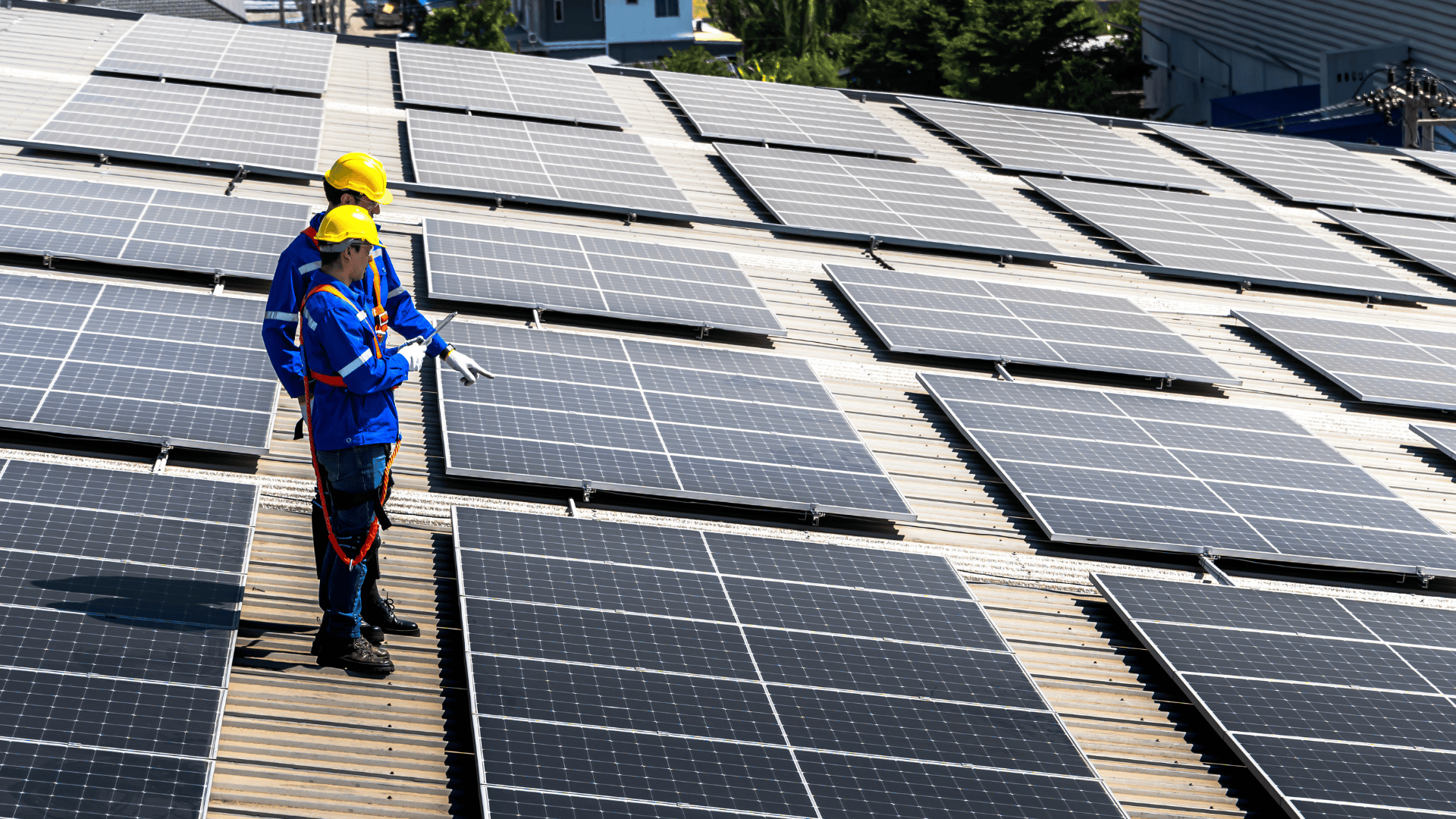December 13, 2022
How to buy solar leads?
The solar energy industry is growing every year, and more and more businesses are turning to solar power as a reliable and cost-effective energy source.
As the solar industry continues to expand, it’s important for solar lead generation companies to stay up to date on the latest trends in lead generation.
This post will provide an overview of how you can buy solar leads in 2022 for your solar companies and a place to seek exclusive solar leads.
Understanding costs When Purchasing Solar Leads
The cost of acquiring solar leads can have a big impact on a solar bottom line. Solar leads are inquiries generated from potential customers who are interested in purchasing or learning more about solar panel installation.
Before investing in solar lead generation, it’s important to understand how much each lead will cost and what your true cost per close is.
Let’s take a look at the different types of pricing models and how they determine your cost per close.
Per Lead Pricing
The most common pricing model for buying solar panels is “per lead” pricing for a solar lead generation company.
This model charges you based on the number of leads you buy—the more leads you purchase, the lower your overall cost per lead will be.
It’s important to note that not all leads are created equal; some may require more time and effort than others to close, so your actual cost per close may vary depending on the quality of the lead.
Additionally, be sure to ask about any additional fees or hidden costs that could increase your total price.
Cost Per Close (CPC) Pricing
Another common pricing model for purchasing solar leads is “cost per close” (CPC) pricing, which charges you based on How many deals you actually close from the leads you purchased.
This model can be beneficial because it helps ensure that you pay only for qualified leads that result in closed sales and generate revenue for your business.
At the same time, however, this model does not guarantee any specific number of closed deals or to generate leads and can leave you with less control over the total cost of your campaigns if sales don’t go as planned.
True Cost Per Close
When determining your true cost per close for solar leads, it’s important to factor in all of the costs associated with generating those leads in addition to just the price per lead.
For example, if you have employees who work on following up on those leads or if you have invested in marketing materials or technology solutions then these should also be included in your calculation.
Additionally, it is important to consider any additional expenses such as installation fees or permits that may be required before closing a deal when calculating your true cost per close.
Before investing in solar lead generation, it’s important to consider which type of pricing model best fits your business needs and budget.
Understanding how much each lead will cost and what your true cost per close is will help ensure that you make an informed decision when making purchases for solar leads.
With this knowledge, companies can make better decisions on where to spend their marketing dollars for maximum ROI.
Types of home solar leads
Generating home solar leads is essential for any business looking to expand their customer base and increase sales.
With so many different types of leads available, it can be confusing to determine which lead will result in the most conversions for your business.
Let us explore the various types of home solar leads, and how best to use them to generate quality leads for your company.
Solar Appointments
Solar appointments are a great way to generate quality home solar leads. These are meetings between prospective customers and businesses that have been pre-scheduled with the intent of discussing a potential sale or purchase.
Solar appointments are typically set up by telemarketing firms who contact prospects and schedule meetings on behalf of their clients.
By utilizing this type of lead generation method, companies can ensure that they are targeting qualified prospects who have expressed an interest in purchasing a solar system.
Telemarketing Leads
Telemarketing is another effective way to generate home solar leads. This type of lead generation involves calling prospects and engaging them in conversation about their needs and interests related to purchasing a solar system.
Telemarketers can also provide information about pricing, product features, and other important details that will help convert the prospect into a customer.
Solar installation companies should ensure that they use qualified personnel when conducting telemarketing calls as this will help ensure a higher conversion rate from these leads.
Canvassing Leads
Canvassing is another great way to generate quality home solar leads. This type of lead generation involves going door-to-door in neighborhoods where there may be potential customers for your product or service.
Canvassers typically hand out brochures or flyers that contain information about their company and its products or services, as well as contact information if the prospect is interested in learning more about what the company has to offer.
Canvassing is an effective way for companies to reach out directly to potential customers and make sure they get all the necessary information before making their decision on whether or not to purchase a solar system from your business.
Aged Data
Aged data refers to data collected from previous campaigns that have not been used yet but still contain relevant customer information such as name, address, phone number etc.
Companies can utilize aged data by reaching out directly via mailings or phone calls once they have collected enough detailed information on potential customers from previous campaigns.
By utilizing aged data, companies can target potential customers who may have missed out on earlier marketing efforts but could still benefit from the product or service being offered by the business in question.
Opt-in Web Leads
Another popular method for generating quality home solar leads is opt-in web forms or surveys which require users to submit personal information such as name, address and email address before being able access additional content related to purchasing a solar system from your company’s website .
This type of lead generation enables companies to capture user data which can then be used for further marketing initiatives such as email campaigns or direct mailers targeting those who have already expressed an interest in purchasing one of your products or services .
Generating quality home solar leads requires careful planning and research into which methods work best for your particular audience demographics.
Companies should always ensure that they are using qualified personnel when conducting any form of lead generation activities so as not maximize results while minimizing costs associated with these activities.
With the right approach , businesses can ensure that they are targeting qualified prospects who are ready willing and able purchase their products services.
Types of opt-in web leads
Generating quality leads is essential to any business, and opt-in web leads are a great way to do just that.
Opt-in web leads are leads that customers have willingly provided their contact information in exchange for something of value—usually a product or service.
There are several ways to generate opt-in web leads; let’s take a look at some of the most popular.
Organic Solar Leads
Organic solar leads come from organic search engine traffic (i.e., people who find your website through Google or another search engine).
These organic solar leads come from people who already know they need a product or service you offer and who found your website through a search query.
To generate more organic solar leads, optimize your website for SEO so that it ranks higher in the search engines and has better visibility online.
Google PPC Leads
Google PPC (Pay Per Click) leads come from paid advertisements on Google’s search engine result pages (SERPs). Advertisers pay for each click their ad receives, and these clicks generate potential customers who are interested in what you offer—hence, the “pay per click” name.
This method is highly effective as it allows you to target specific keywords related to your product or service and get more qualified visitors to your site.
Facebook Solar Leads
Facebook solar leads come from marketing campaigns run on Facebook. These campaigns can include sponsored posts, page likes, video views, etc, all of which can drive organic traffic to your website and increase the chances of lead generation.
The best part is that Facebook provides detailed insights into the effectiveness of each campaign so you can fine-tune them as needed and make sure they produce maximum results over time.
Buying Third-Party Leads
Another way to generate opt-in web leads is by buying third-party leads from other companies or websites. This method involves buying lists of contacts who may be interested in what you offer—although it should be noted that this method carries a certain amount of risk as there’s no guarantee that those people actually need what you’re offering. However, if done correctly, this can be an effective way to generate quality opt-in web leads for your business.
Opt-in web leads are a great way for businesses to reach potential customers without spending too much money on advertising campaigns or other marketing activities. Ultimately, choosing the right approach will depend upon careful analysis of user data combined with strategic targeting methods designed specifically for your company's needs!
Are Solar Leads Worth the Cost?
Are you considering investing in solar leads? With the rise of green energy, more and more companies are looking to capitalize on this growing market. But is it worth the cost? Let’s take a look at what solar leads are, why they are important, and how much you can expect to pay for them.
What is a Solar Lead?
A solar lead is a potential customer who has expressed interest in your company's services by providing their contact information. Companies like SolarGainz provide businesses with solar leads by connecting potential customers with businesses that offer the services they need. This means that a solar lead already knows what they want and is actively looking for it.
Why Are Solar Leads Important?
Solar leads are important because they help you find customers who are already interested in what you have to offer. By investing in qualified leads, you avoid wasting time and money on prospects who may never convert into paying customers. Additionally, these leads can be filtered based on criteria such as geographical location or budget so that you only receive the most relevant leads.
How Much Do Solar Leads Cost?
The cost of solar leads varies depending on the source and quality of the lead. For example, some sources will charge per lead while others may charge a flat fee for access to their database of qualified leads.
Additionally, the cost will vary depending on factors such as geographic location or desired demographic information. Generally speaking, prices range from $10-$30 per lead but can go even higher if targeted keywords or niche markets are involved.
Investing in solar leads is definitely worth considering if your business relies on generating new contacts or increasing sales through targeted marketing campaigns. By accessing qualified prospects who already show an interest in your services, you save time and money while improving conversion rates by targeting relevant audiences with tailored messages.
With careful tracking of ROI metrics, you can easily determine whether this strategy works best for your business goals—making it well worth considering when looking for ways to stand out from the competition!
About Sunbase
Sunbase helps solar companies succeed through a suite of Solar CRM tools like Solar Lead Management Software, Solar Proposal Software, etc.! To book your free demo or an appointment, contact us here.
I agree to receive marketing messaging from Sunbase at the phone number provided above. I understand data rates will apply, and can reply STOP to OPT OUT.







